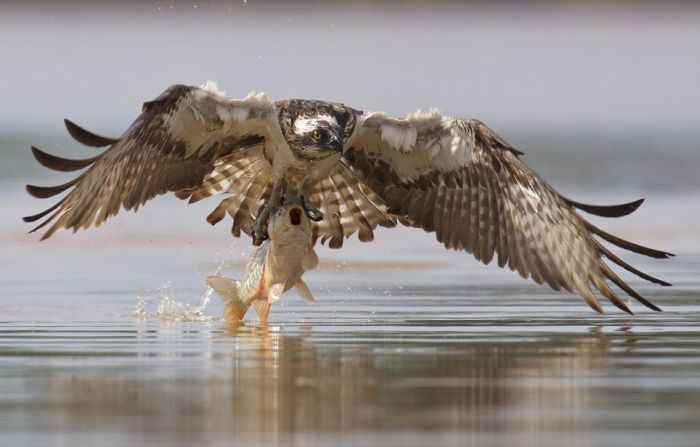|
|
Osprey Hunting For A Fish
|
The Osprey is the second most widely distributed raptor species, after the Peregrine Falcon. It has a worldwide distribution and is found in temperate and tropical regions of all continents except Antarctica. In North America it breeds from Alaska and Newfoundland south to the Gulf Coast and Florida, wintering further south from the southern United States through to Argentina. It is found in summer throughout Europe north into Ireland, Scandinavia and Scotland, England, and Wales though not Iceland, and winters in North Africa. In Australia it is mainly sedentary and found patchily around the coastline, though it is a non-breeding visitor to eastern Victoria and Tasmania. There is a 1,000 km (620 mi) gap, corresponding with the coast of the Nullarbor Plain, between its westernmost breeding site in South Australia and the nearest breeding sites to the west in Western Australia. In the islands of the Pacific it is found in the Bismarck Islands, Solomon Islands and New Caledonia, and fossil remains of adults and juveniles have been found in Tonga, where it probably was wiped out by arriving humans. It is possible it may once have ranged across Vanuatu and Fiji as well. It is an uncommon to fairly common winter visitor to all parts of South Asia, and Southeast Asia from Myanmar through to Indochina and southern China, Indonesia, Malaysia and the Philippines.
Behaviour and ecology
Ospreys have been known to exhibit great joint flexibility. Their limbs (wings and legs) have adapted to have greater flexibility over time. An example of this is when flying towards bright lights (e.g., sun)—they are able to bend the joint in their wing to shield their eyes from the light to aid safety while flying.
|
|









